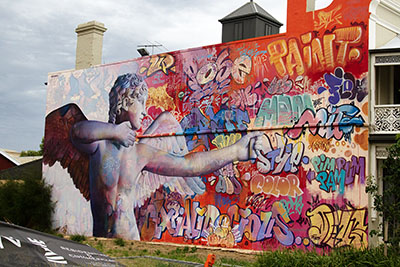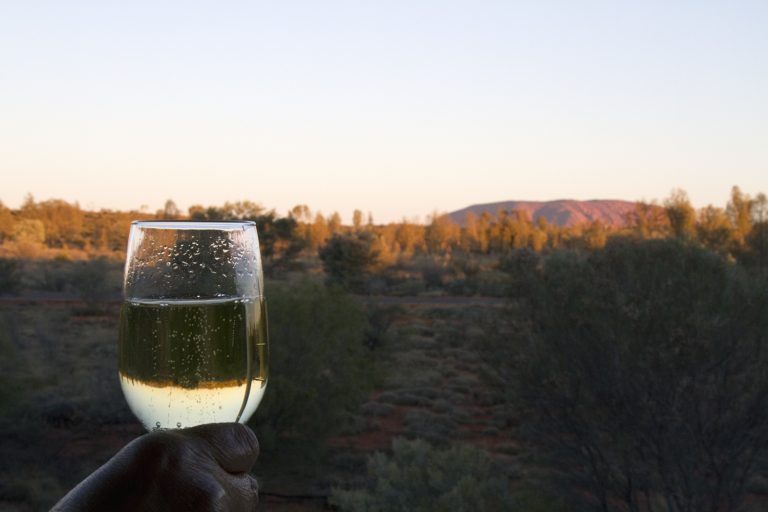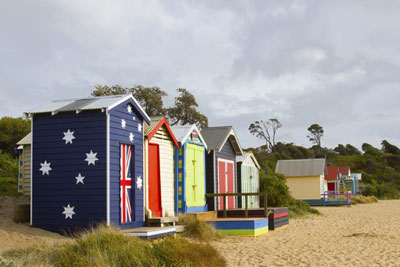When is the best time to visit Uluru?
Wondering when is the best time to visit Uluru? The time of year you travel to Australia’s Red Centre can make or break your trip, thanks to the extreme weather of this region. Read on for my recommendations.

Uluṟu-Kata Tjuṯa National Park is one of the best places to visit in Australia.
No matter how well-travelled you are, the Rock will probably blow your mind. It’s an amazing sight.
However, when you choose to visit Uluru is of paramount importance. Being located in the Red Centre of Australia – the Outback – the extreme weather conditions here can make, or break a trip.
The climate in this region operates in extremes. Think very cold at night in winter and scorching hot temperatures in peak summer.
This doesn’t mean there isn’t a good time to visit Uluru. You just have to time it right.
If you’re looking for the best time to visit Australia in general, check out my helpful guide. And here’s why you shouldn’t shy away from booking a winter holiday in Australia.
When is the absolute best time to go to Uluru?

Mid-August to very early October
The best time to visit Uluru is from late winter to mid-spring.
The reason for this is three-fold.
First up, the climate of the area is much more bearable in the cooler months. Summer brings scorching temperatures (more on that in a moment), while on the flip side, the desert temperatures can plummet at night in winter, dropping below 0°C.
However, this means the temperatures are cooler during the day, with highs between 20–23°C (68-73°F). Chef’s kiss.
Travelling the tail-end of winter and early spring means you’re going to get the warmer daytime temperatures, without the plunging cold of winter in the desert.
The colours of the rock are also more vibrant, in the soft, wintery light.
Plus, this time period is usually just after US and Europeans visitors have left, after travelling to Australia during their own summer periods. As you enter the shoulder season, flights, accommodation and tours won’t be at peak prices – and you’ll avoid the crowds.
In late-August while staying at Desert Gardens Hotel in Yulara, I got upgraded to a room with a view of the Rock, despite having merely paid for garden views. Bonza!
And what about domestic tourists?
The Australian winter school holidays are usually in July and spring holidays in late September/early October. If you travel to Uluṟu in late-August/early September, you’ll miss out on these crowds too.
August and September are also generally the best months to see the park’s wildflowers in bloom.
And this is why it’s the best time to go to Uluru.
See some of my other tips for travelling to Uluru.

The best month to visit Uluru
It’s a tie – September and May.
September is the first month of spring in Australia. Depending on where you are on this massive continent, temperatures are slowly starting to rise, but they’re not unbearable. Best of all, the night-time temperatures are not as freakishly cold.
Average temperatures for September range between 10.7–28.7°C (51.2–83.7°F).
May is late-autumn. While the days will still be warm, the heat won’t be like the fiery depths of hell. Plus, although the nights will start getting cool, it won’t be unbearably freezing, like it can get in winter.
May’s average temperatures are 9.3–24.3°C (48.7–74.7°F). Lovely.
This is the best time to visit Uluru, if you have a bit more flexibility in your planning.

When are other good times to go to Uluru?
Can’t make it then? Don’t worry – there’s still other times of the year that will be fine to plan your trip around.
Visiting Uluru in spring & autumn
Travel in Australia’s shoulder seasons is nice in general and a visit to Uluru is no exception.
The temperatures are pleasant and you can tackle the park’s hiking trails.
As you’re not quite dealing with the milder winter temperatures, it’s still probably best to see Uluru in the early morning or late afternoon, as midday is the warmest time to be in the park.
There will also still be some bug action, but less than in the summer months.
To avoid crowds, try to time your trip outside of the NSW and Victoria school holidays. Holidays differ from state to state in Australia (not usually by more than a week), but as these are the two most populous states, their holiday periods are best to go by.

Visiting Uluru in winter
Personally, I think Uluru is lovely to visit in winter, so long as you avoid the Northern Hemisphere crowds.
As previously mentioned, it can get cold at night, but if you don’t hate the cold like me and have appropriate clothing with you, you’ll be fine.
I sat outside for the Tali Wiru dinner (one of the best experiences I’ve had in Australia, or even the world) and an astronomy sky tour in Yulara and did not freeze.
Plus walking around Uluru in the middle of the day in August, when the weather was 23°C, was pretty close to perfect.
If you’re visiting from May to September, pack appropriate clothes. You may find yourself quite comfortable in trousers and a t-shirt during the day, but the cold at night may call for jumpers, jackets, enclosed shoes and even a beanie.
Layer up and keep warm, especially if you’re taking part in nighttime activities.

When is the worst time to visit Uluru?
And when should you absolutely not visit Uluru, if given a choice?
Well. The worst time to plan a visit to Uluru is over the summer, from late November to early March.
As this is the Red Centre of Australia, it is semi-arid desert. Deserts are of course, quite hot.
Summer temperatures average between 30-35°C (86-95°C). The highest temperature recorded at Uluru was 45.5°C (114°F) – in the shade, to boot. And again, with it being in the middle of the Australian desert, there isn’t much shade there to begin with.
Not super pleasant at all, even if you’re a fan of the heat.
If you visit Uluru in the summer, you’re not going to want to do anything much during the day, particularly as it is inadvisable to travel to the park past 11am at this time of year (so no hiking around the Rock or otherwise).
The extreme temperatures isn’t even the worst bit about visiting Uluru in the summer.
Let’s talk about the bugs.
Insect populations explode in the summer months and the higher the temperature, the more active the bugs (think plague proportions). If you love being followed by a swarm of flies wherever you go, then this is the time to visit.
You can of course avoid the flies, by going full Aussie and wearing a protective head net when you’re outside.
Not keen? Well, summer is definitely not the best time to visit Uluru.
Although one point in summer’s favour – hot weather in Australia can bring storms and rain. And when it rains over Uluru, waterfalls form, flowing down the side of the rock.
However, it on average only rains around five days a year in this part of Australia. So you’d have to be extremely lucky to witness this rare sight.

When is the best time of day to see Uluru?
The best time of the day year-round to visit Uluru is sunrise and sunset.
Vibrant colours fill the sky, falling on the rock and making it feel otherworldly.
There’s plenty of experiences to do during these times of the day:
- Sunrise tour with picnic breakfast
- Sunrise tour in the Field of Light (with a hot bev)
- Full day tour from Alice Springs with a BBQ dinner
- Sunset tour with nibbles and a glass of wine.
Here are some other ways to experience Uluru.
In conclusion: the best time to visit Uluru
Here are the time of year you should try to visit Uluru:
- Mid-August to September
- Spring (September/October)
- Autumn (late April/May)
And winter isn’t too bad, so long as you rug up and avoid the crowds.
All in all, visiting the Rock is for most visitors, a once in a lifetime event. While you do want to try and time it right, if it doesn’t work out, nae bother. You’re still going to have a good time and enjoy this ancient, spiritual place.
Have you decided on a time to visit Uluru, which works for you? I hope this has helped you in your trip planning. Have a wonderful time visiting Australia’s Red Centre. For more, check out my Australia Travel Guide.







